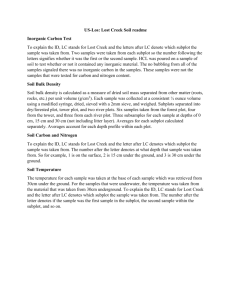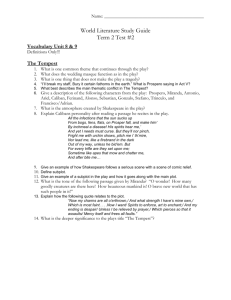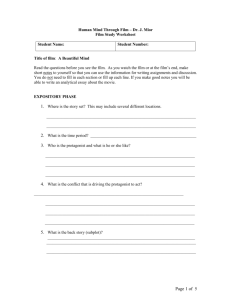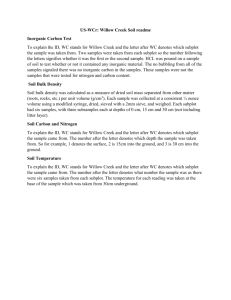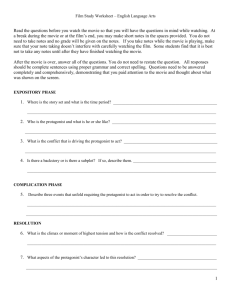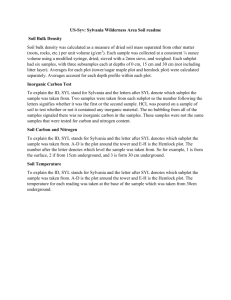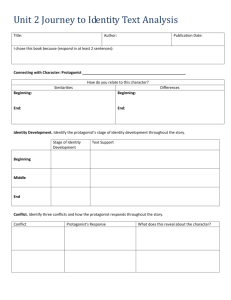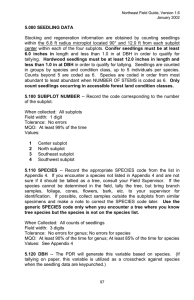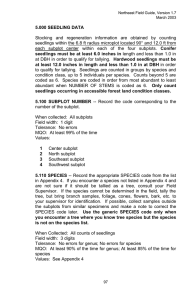FMS 409 Advanced Screenwriting
advertisement
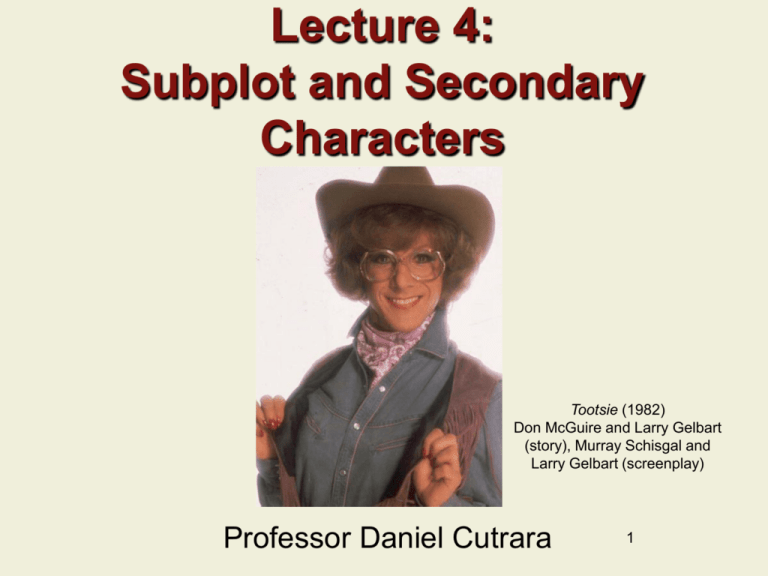
Lecture 4: Subplot and Secondary Characters Tootsie (1982) Don McGuire and Larry Gelbart (story), Murray Schisgal and Larry Gelbart (screenplay) Professor Daniel Cutrara 1 Previous Lesson • Genre and Structure • Conventions as Creative Limitations • Reinventing Genre • Mixing Genre This Lesson • Subplots • Secondary Characters • Assignments Subplots “A subplot receives less emphasis and screen time than a Central Plot, but often it’s the invention of a subplot that lifts a troubled screenplay to a film worth making.” McKee Lesson 4: Part I -Robert 4 Subplot Strategies • According to McKee: A subplot may be used to contradict the Controlling Idea of the Central Plot and thus enrich the film with irony. – Dark Night - The love story between Bruce Wayne and Rachel Dawes. 5 Subplot Strategies - 2 • According to McKee: Subplots may be used to resonate the Controlling Idea of the Central Plot and enrich the film with variations on the theme. – A Midsummer Night’s Dream by William Shakespeare - The various romantic storylines. 6 Subplot Strategies - 3 • According to McKee: When the Central Plot’s Inciting Incident must be delayed, a setup subplot may be needed to open the storytelling. – Casablanca – The young couple needing transit papers. 7 Subplot Strategies - 4 • According to McKee: A Subplot may be used to complicate the Central Plot. – The love story typically found in crime stories. 8 Subplot Example 1 • Pause the lecture and watch the first clip from Tootsie. – Michael Dorsey changes his friendship with Sandy to cover up the central plot. – His abusive relationship to her reflects the abusive relationships he finds men have with the women on the show. 9 Subplot Example 2 • Pause the lecture and watch the second clip from Tootsie. – The irony is set up visually. Julie’s father is falling in love with Tootsie. Michael is falling in love with Julie. – The subplot with the father shows Michael’s growth. 10 Secondary Characters “In essence, the protagonist creates the rest of the cast. All other characters are in a story first and foremost because of the relationship they strike to the protagonist and the way each helps to delineate the dimensions of the protagonist’s complex nature.” - Robert McKee Lesson 4: Part II 11 Supporting Roles • According to McKee: The supporting characters should draw out different dimensions of the protagonist. • Supporting characters should have some complexity. • Their dimensionality is brought out through their interaction with the protagonist and one another. 12 Supporting Roles - 2 • Drawing out the different dimensions of the protagonist. • For example: – Character A provokes sadness and cynicism – Character B brings out a witty and hopeful side – Character C inspires the loving and courageous side – Character D forces fear that ignites fury 13 Supporting Roles - 3 • Supporting characters can have complexity. • For example: – Character A: appears to be an honest friend and ally but a plot twist could reveal he is a traitor. – Character B: the essential composition of the character can create complexity. – Terminator - A machine in human form. 14 Supporting Roles - 4 • Setting and characterization can create complexity. • For example: – Character C: an ordinary person in an exotic location. – Character D: an exotic person in an ordinary setting. 15 Bit Parts/Functional Characters • Functional characters like waiters, taxi drivers, etc. should remain flat. • However, give them something fresh to make it a role worth acting. • Be careful not to make the role too interesting or else the audience will expect the character to have greater importance. 16 Assignments Tootsie (1982) Don McGuire and Larry Gelbart (story), Murray Schisgal and Larry Gelbart (screenplay) Lesson 4: Part III 17 E-Board Post #1 • Select Script for Analysis 18 End of Lecture 4 Tootsie (1982) Don McGuire and Larry Gelbart (story), Murray Schisgal and Larry Gelbart (screenplay) Next Lecture: Rhythm and Tempo
